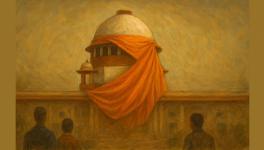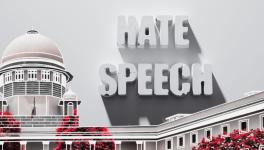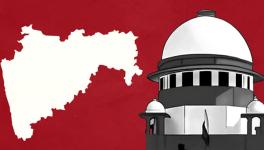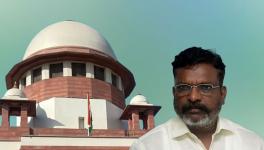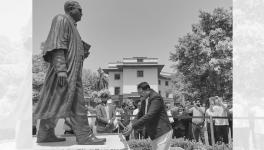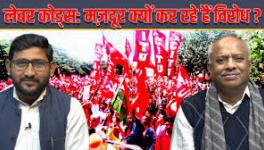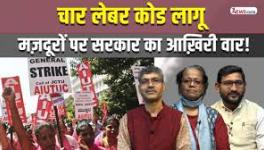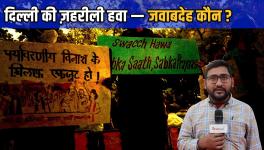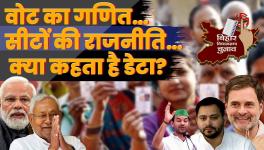CJI Sanjiv Khanna’s Balancing Act Amid Turbulent Times
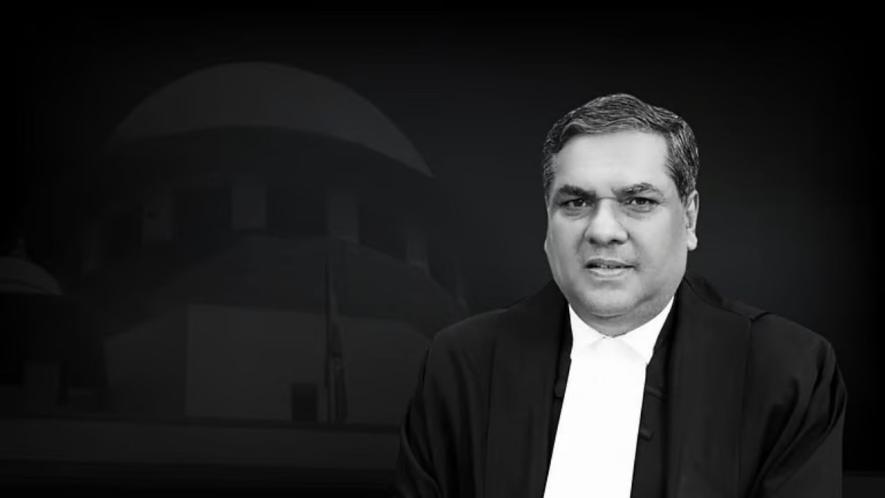
On the evening of march 15, Delhi High Court chief justice, D.K. Upadhyaya made the first communication to Sanjiv Khanna, the sitting chief justice of India, about a jarring development the previous midnight in a High Court judge’s bungalow on Tughlaq road. Till nearly 2 AM the previous night, fire personnel and Delhi police officials had scoured, taking videos and pictures of an outhouse in the residence of Yashwant Varma, after piles of burnt currency were discovered following an unexplained fire. A scandal such as this had not graced the Indian judiciary in at least a few years.
Khanna asked Upadhyaya to make some early inquiries through his registrar general, with Varma and the Commissioner of Police, and over the next few days, he would quietly observe the developments. On March 20, six days after the cash was first discovered, after Upadhyaya would send pictures and video footage of the cash, Khanna would sit down with the collegium and consider the idea of repatriating Varma back to Allahabad.
The next day, seven days after the fire broke out, Times of India carried a front page story: ‘Fire at HC judge’s house leads to recovery of cash pile’. As the news of the fire and the Court’s decision to surreptitiously transfer out Varma gathered momentum, the Supreme Court put out a press release stating that the decision to transfer was unconnected to the cash controversy. It was not a convincing stance. “I frankly, with the greatest of respect to the Supreme Court chief justice, do not believe what he’s saying here,” Arnab Goswami blasted on Republic TV, on a prime time slot, “because it lacks transparency.”
That same day, Khanna would receive the report from Upadhyaya who would indicate that “prima facie…the entire matter warrants a deeper probe.” He would ask Upadhyaya to pose certain questions to Varma regarding the issue and direct Varma not to dispose of his mobile phone.
There was a belief that the chief picked up pace only after the news was leaked out to the media a whole week after the incident. On March 22, in a near unprecedented move, Khanna made public Upadhyaya’s report as well as Varma’s response to the allegations along with the pictures and videos gathered by the fire personnel, besides forming a three-judge in-house inquiry panel.
“He managed to ensure that whatever process was followed was both fair and transparent and was such that would restore the confidence in the judiciary,” said senior advocate Huzefa Ahmadi, “It sent a message that the judiciary will deal with corruption very strongly when it is perceived within and would not brush it under the rug.”
But some believed, things may as well have gone differently had the media leak not happened. “These details did not come from the Supreme Court’s own volitions,” said Ashish Goel, an advocate practising in the Supreme Court.
G. Mohan Gopal, a former director of the National Judicial Academy and National Law School, Bengaluru, explained that while Khanna’s tenure marked a “quantum leap in transparency on the complaint”, the in-house process did not see any reform. “The framework needs improvement, but within that framework he has handled it well. The quantum leap in transparency helped to kill off needless speculation about how the incident came to light,” Gopal said.
But there would be another glaring miss: in a press release on May 5, the Court noted that the in-house inquiry committee had submitted its final report. On May 8, another press release noted that Khanna had sent a letter to the President and Prime Minister. Yet there was no indication that the report would be made public. “How can the end report not be in public domain?”asked senior advocate Sanjoy Ghose, explaining that without the report, there remained a cloud of mystery regarding the allegations, and was, in some ways, a “disservice to Justice Varma.”
In 2003, the Supreme Court, in a case concerning allegations against sitting Karnataka HC judges, had noted that reports on in-house committees are not liable to be made public. “What was happening in 2003 is also happening in 2025,” Goel said, noting that an opportunity to reform an opaque procedure in the backdrop of a historic moment for the judiciary was essentially squandered. “He is not leaving the Court more transparent than his predecessor,” Goel said.
Still, there was a feeling that Khanna could not be squarely held accountable since he seemed to be a chief who encouraged collective decisionmaking. “It was a collegial CJIship,” Ghose would tell me, indicating that major decisions seemed to be taken collectively by the Collegium. “If he had full liberty, I am sure he would have made the report, and action taken on the report public also,” Gopal speculated.
It was a tenure marked by certain defining moments for the judiciary, both in terms of judicial function, called upon to adjudicate on the pressing communally sensitive cases, and crucial questions on judicial accountability.
Most lawyers I spoke to felt he was a perfect CJI in some ways, taking the right decisions on the truly testing moments, in silence and away from media glare. “He behaved in a manner which was absolutely becoming of the Chief Justice of India, without getting pressurised by what was happening on the ground, yet at the same time feeling for the victims,” said Rashmi Singh, an advocate. Some of this became the cause of teething friction with the executive, as the vice president conflated the crises to lambast the collegium system, and a sitting BJP MP alleged Khanna of fomenting “civil war” in the country.
There were some, such as Talha Abdul Rahman, advocate on record, who felt Chief Justice Khanna in Court 1 was "more persuasive” and "more patient" than Justice Khanna in Court 2. Some even felt there had been a marked difference in his judicial decisionmaking as the chief - from one who pushed back urgent, politically sensitive matters to someone who took swift, impactful decisions on a ticking clock.
On March 14, 2024, a bench of Justices Khanna and Dipankar Datta had declined to issue an interim order to stay the selection and appointment of election commissioners under the hurriedly enacted Chief Election Commissioner and Other Election Commissioners (Appointment, Conditions of Service, and Term of Office) Act, 2023, which took away the CJI’s role in appointment of election commissioners despite an earlier ruling detailing its necessity for fairness. In January 2024, the same bench had declined an interim relief to TMC MP Mahua Moitra, who had been expelled from the Lok Sabha, allowing her to participate in the House sessions. Earlier in October 2023, eight months after Manish Sisodia was arrested in the excise policy case, the same bench had recorded a lengthy criticism of how the former AAP leader had suffered from “prolonged period of incarceration.” Yet, it declined him bail, letting the matter go with only an assurance from the lawyers that the trial would be concluded in six to eight months. It wouldn’t be until August 2024, seventeen months after his arrest, that Sisodia would step out on bail. “Across his career, he has been a conservative judge,” the senior counsel told me. Goel explained that as puisne judge, some of his decisions had the tendency to push things to the back of the shelf till the pressing matter became infructuous.
Yet as the chief justice, his particular decision on imposing a stay on further suits and surveys in a case challenging the constitutionality of the Places of Worship Act was seen as an unprecedented, radical move. One lawyer explained that Khanna was not trying to play a balancing act, consistent in his relationship with the judiciary. One senior counsel pointed out the contrast between him and his predecessor, CJI D.Y. Chandrachud, who seemed much more “publicity oriented” and “political”. Khanna, on the other hand, came with a reputation of “honesty”, and “went to the extent where he was mainly interested in preserving that reputation.” But some of it, others said, came simply from a desire to not foment conflict, either with the bar or the executive.
It was a tenure marked by certain defining moments for the judiciary, both in terms of judicial function, called upon to adjudicate on the pressing communally sensitive cases, and crucial questions on judicial accountability. While some decisions broke ceiling, others - such as his hesitation to issue an interim stay order in the Waqf matter, and the Court’s ineffective treatment of the Justice Shekhar Kumar Yadav case, who delivered a hate speech targeting Muslims - reflected more the conservative, non-confrontational shadow of his judicial career. Whether Chief Justice Khanna came out the other side with a Court stronger, more transparent, and bolder in its relationship with the executive, was a question on many minds the week of his retirement.
Silent administrative shakeups
One of the first administrative decisions under Khanna’s tenure was a systematic shift away from regular hearings towards miscellaneous hearings, likely with the intent to drive down pendency numbers (when he took over, over 82,000 cases were pending in the top Court). A circular in November 2024 explained that no regular matters would be listed on Wednesdays and Thursdays, and while this was to remain in effect till the end of December, Anuj Kapoor, an advocate on record, told me the focus on miscellaneous matters remained in the months that followed as well with regular matters only being listed on Thursdays even after December. It was likely driven by the 2024 Annual Report’s indication that 72.22 percent of pending cases were all admission matters. As of February 2025, 65.2 percent of ‘registered’cases were in the admission stage. According to Supreme Court Observer’s reports on pendency, it appears Court pendency altered unevenly during Khanna’s tenure, reducing starkly in his first month (by over 650 cases), before increasing again in December (by 625 cases), decreasing in January (by 527 cases), spiking once again in February (by 537 cases) and falling in March (by 588 cases). These numbers paint a complex picture of whether this decision made a dent on pendency and disposal.
Another notable change on listing was through a circular directing the listing of miscellaneous matters not more than ten days after the expiry of the period given by the Court for listing (“one/two/three weeks and so on”). It was a major concession to advocates who had complained that the Registry was not listing matters as per the Court’s directions. “Earlier there was no compliance, but now the registry closely follows the instructions of that circular, and matters are listed precisely when the orders direct,” Kapoor said. He explained that while AoRs continued to remain an “aggrieved community”, there had been more open conversation between the chief justice and SCAORA on issues pertaining to the registry. Khanna, he told me, has acknowledged that there are staffing issues.
Ibad Mushtaq, an advocate on record, explained that one positive improvement has been in the mentioning process, “You mention a matter, it will be listed before one of the benches. It is not necessary that one kind of matters will only go to one bench - whoever has the space, the matter is added there.” He noted that under previous CJI Chandrachud’s tenure, despite urgent mentioning matters would be listed “four or five days down the line” even as another advocate noted that it was under CJI Chandrachud’s term that email mentioning was started as a practice. Yet, the continuation of this practice will depend on incoming CJI B.R. Gavai, since, for mentionings, the registrar judicial has to take orders from the chief justice.
Even as his tenure started with silent administrative reforms focussed on the bar and court pendency, by the end of 2024, brewing communal tensions in the country would soon bring forth an initial test of his term.
Taking charge in communal times
On November 24, 2024, violence erupted near the five hundred year old Shahi Jama Masjid in Sambhal during a court ordered ASI survey. Five young Muslim men were ruthlessly killed in the confrontation with security personnel. On November 29, there was a momentary halt when Khanna directed the trial court to defer proceedings until the need for a survey was litigated.
In the aftermath of Sambhal, multiple suits popped up across courts disputing claims over Muslim places of worship, including in Ajmer and Jaunpur. On December 7, Khanna formed a special bench, led by himself, to hear an old petition challenging the constitutionality of the Places of Worship Act, and five days later stayed registration of any further suits demanding surveys of places of worship and stopping courts from passing effective interim or final orders, including on surveys, while the matter was pending. Referring to both the interim orders in Sambhal and the places of worship petition, Ahmadi noted that it “required a lot of courage”.
“If you look at the order on a perspective of civil law, it is a blanket injunction, an unheard of order,” Mushtaq said, “This was his way of addressing it and he did that in such a calm manner without dropping out too many words.” He pointed out that the order was meant to create ripple effects, “Now, after that no such suits have been filed to my knowledge and no surveys are being sought, and that all happened in a very calm, very conducive manner without posing any sharp questions.” Mushtaq compared this to a different type of conduct while handling similar matters under Justice Chandrachud, who in October 2022, pondered out loud in court during the Gyanvapi hearing that the Act did not prohibit the determination of the “religious character” of a place of worship, a statement that is widely credited for having pushed forth right-wing groups to litigate widely on these disputes. One senior counsel told me that Chief Justice Khanna “was very instrumental in undoing and countering the chaos created by his predecessor.”
A characteristic feature of Khanna throughout these matters was his terse, pointed conduct. One advocate on record noted, for instance, that unlike his predecessor, in these politically tense matters, counsels, including Solicitor General Tushar Mehta would not attempt to “create a scene”. “Before him, people don’t do that because he doesn’t say too much to give anybody the opportunity,” they noted.
Let alone a withdrawal from judicial work, it seems, in fact, that Yadav is in the process of being slowly reinstated. A roster release of May 1 worryingly notes that Justice Yadav “in addition to his own determination, will take up the determination of Court No. 48 (Hon’ble Mr. Justice Vipin Chandra Dixit), on 02.05.2025.”
A second, communally sensitive issue was developing in the backdrop. On April 2, after twelve hours of debate, well past midnight, the Lok Sabha passed the Waqf (Amendment) Act, 2025 by a narrow margin - which did away with the concept of waqf-by-user for future waqf properties and substantially increased the government’s involvement in managing Waqf assets. Ghose told me that Khanna pressed on the two most important issues - of waqf-by-user and the presence of non-Muslim members on the waqf boards. On April 17, despite an earlier hint to pass an interim stay order (Khanna had noted that while the Court does not normally intervene when a legislation is passed, there were “exceptions”), the bench ultimately restrained from passing an interim order, taking only an assurance from the Union that no waqfs, including waqf by user, would be denotified, and that no new members would be appointed to the Waqf Council or waqf board.
Singh, who assisted in the waqf matter, noted that CJI Khanna “delivered a very balanced order, which actually did not prejudice the State and at the same time, protected the petitioners and the people.” But one senior counsel believed that Khanna’s decision to not pass the interim stay may have been driven more by a desire to not take up controversy. He noted that by relying solely on the government’s assurance, Khanna had shown his older conservative strain.
Yet, Khanna’s secular personality as a chief justice was being credibly established. On November 27, a bench of CJI Khanna and Justice Kumar upheld the inclusion of ‘socialist, secular’ in the Preamble. Gopal termed the judgement “balm on the wounded conscience of India.”
But there was another communally offensive issue where the Supreme Court under CJI Khanna faltered.
The unresolved case of Justice Shekhar Kumar Yadav
In a dingy hallroom in the Allahabad High Court on December 10, the legal cell of the Vishwa Hindu Parishad, a Hindu right wing organisation alleged of involvement in the Babri mosque demolition and the 2002 Gujarat riots, organised a gathering. The guest was a sitting judge named Shekhar Kumar Yadav, who had, in the past, passed judicial orders advocating making “cow protection a fundamental right of Hindu community”, and for the cow to be declared India’s national animal. Yadav went on to deliver a shocking hate speech, using slurs such as ‘kathmullah’ in reference to Muslims.
“I have no hesitation in saying that this is Hindustan, this country would function as per the wishes of the bahusankhyak (majority) living in Hindustan. This is the law,” he spoke through a microphone.
K.K. Rai, a senior counsel in the Allahabad High Court, who was part of the Adhivakta Manch, an organisation of progressive lawyers who demanded accountability, noted that Yadav’s speech breached his constitutional oath. It was a sensitive issue - chief minister Yogi Adityanath had already spoken in support of Yadav in the state legislature.
On December 17, Yadav was reportedly summoned before the Collegium, and was told that his remarks were “avoidable.” But a month later, Yadav noted that he was standing by his remarks. Shortly after Justice Hrishikesh Roy retired, he stated that an in-house inquiry committee against Yadav had been set up. Yet, absolutely no details regarding this committee, its composition or its findings are known to date.
The only punitive measure, in any form, was a roster shake up on December 16 by the Allahabad HC chief justice limiting Yadav’s roster to only 'First Appeals' arising from orders passed by civil courts, specifically those dated up to 2010. Until then, he had reportedly been hearing major ‘bail’ applications. His continued involvement in judicial work had been strongly criticised. On February 3, senior advocate Dushyant Dave urged CJI Khanna to withdraw judicial work from Yadav.
Let alone a withdrawal from judicial work, it seems, in fact, that Yadav is in the process of being slowly reinstated. A roster release of May 1 worryingly notes that Justice Yadav “in addition to his own determination, will take up the determination of Court No. 48 (Hon’ble Mr. Justice Vipin Chandra Dixit), on 02.05.2025.” This means that effectively, it is not merely old first appeal matters, but also fresh second appeal matters that have begun to be assigned to Justice Yadav through transfer.
“Tranferring fresh cashes in itself is restoring his position,” Rai told me.
While CJI Khanna and the collegium let the issue clandestinely disappear, Justice Yadav has continued to hold court with impunity, despite an overtly expressed prejudice against minorities and sub-judice constitutional issues. “We wanted impeachment,” Rai told me, “Nothing has happened as per our demand.”
A new era of transparency, but did the Collegium deliver?
Unlike its noticeable omission of the Justice Yadav issue, significant reforms followed the Justice Varma controversy under CJI Khanna’s watch. Notable among this was the Court’s decision to make public a comprehensive, 13-page tabular list on appointments to High Courts under the tenures of chief justices Chandrachud and Khanna.
An initial assessment of the data is revelatory. While CJI Chandrachud appointed 170 judges between November 9, 2022 and November 10, 2024, CJI Khanna appointed 51 judges in six months, between November 11, 2024 and May 5, 2025. According to an analysis by Gopal, there was a remarkable increase in the appointment of OBC judges under CJI Khanna’s tenure, from 12.5 percent to 21 percent. There was also a notable decrease in the appointment of judges who were relatives of sitting judges, from 7 percent to 4 percent. There was also a marginal percentage increase in the appointment of ST judges, and a decrease of general category judges from 43.5 percent to 41 percent.
However, other indicators of the Collegium’s functioning under Khanna paint a bleaker picture. Three appointments were made by the Khanna-led collegium to the Supreme Court - Justices Manmohan, K. Vinod Chandran and Joymalya Bagchi - all of which were Hindu, male appointments, thus making no dent on the inclusivity issue in bench representation. Further, out of the 51 appointments to High Courts, only 6 (less than 12 percent) appointments were of women.
Goel pointed out that longstanding issues with opacity in collegium appointments remained. Collegium resolutions, in fact, became more terse and tight-lipped regarding the considerations in deciding judges.
There was also hardly any pushback on the issue of pending Collegium recommendations which have not been cleared by the government. As per the released data, 29 such recommendations continue to be pending. Notably, while CJI Khanna’s parent High Court is the Delhi High Court, where he served as a permanent judge for nearly 13 years between 2006 and 2019, the name of Swetasree Majumdar, who was recommended for elevation to the Delhi High Court on August 21, 2024, remained uncleared. Majumdar’s name had been recommended alongside successfully cleared names such as Justice Ajay Digpaul’s, who had a notable association with the lawyer’s wing of the RSS.
Also in the aftermath of the Justice Varma controversy, the Court published assets of 21 sitting Supreme Court judges. In a full court meeting on April 1, all 33 sitting judges agreed to make their assets public. However, assets of twelve judges are yet to be published, including notably, Justice B.V. Nagarathna, who is set to become the chief justice in 2027.
While most of those I spoke to lauded this move towards transparency, some were skeptical whether a measure like this would sustain. “These are not customary rules and unfortunately, all these are measures that can be undone [in the tenure of a future chief justice, for instance],” Goel stated.
Three appointments were made by the Khanna-led collegium to the Supreme Court - Justices Manmohan, K. Vinod Chandran and Joymalya Bagchi - all of which were Hindu, male appointments, thus making no dent on the inclusivity issue in bench representation.
A committed tenure, but with blemishes
“Kanoon yadi Supreme Court hi banayega to Sansad Bhavan bandh kar dena chahiye,” said Nishikant Dubey, a BJP MP from Jharkhand, on April 19, speaking into a press camera. If the Supreme Court is to make laws, Parliament should shut down.
The comment came at the end of overlapping discomfort from the executive and the ruling party pertaining to both Khanna’s critical comments on the ‘waqf-by-user’ provision in the Waqf hearings, and the Court’s judgement over a week earlier setting a timeline for the President to take decisions on bills sent to her.
“Chief Justice of India, Sanjiv Khanna, is responsible for all the civil wars happening in this country,” Dubey said.
As the comment made rounds, Khanna maintained a weighty silence. On May 8, in a judicial order for a contempt petition filed against Dubey, a bench of CJI Khanna and Justice Kumar noted that Dubey’s comments were “highly irresponsible”. Yet, it noted that “courts are not as fragile as flowers to wither and wilt under such ludicrous statements.” It stated, “We do not believe that the confidence in and credibility of the courts in the eyes of the public can be shaken by such absurd statements.” The bench dismissed the petition without initiating contempt against Dubey.
Ahmadi was of the opinion that Khanna “did the right thing by not dignifying those kind of comments”. “If someone makes a completely uninformed and a sort of egregious comment and that is not a person holding any constitutional force, it is appropriate not to respond,” he added that it is upon the ruling party to take appropriate actions against Dubey. Goel was of a similar belief owing to a principle opposition to the power of contempt, “You cannot use contempt powers to stifle speech. Today it is Dubey but tomorrow it may be you.”
However, Gopal believed that initiating contempt against Dubey would have been just, especially given how the contempt power has been used in the past against rights-based activists such as Prashant Bhushan and Arundhati Roy. “It was a very significant, very damaging attack,” Gopal said.
Chief Justice Khanna’s was a tenure of heightening tensions between the executive and the judiciary, one which had not been witnessed in at least a few years. Many I spoke to compared his tenure to recent previous tenures. “If it is a tug of war, Chief Justice Khanna is not loosening it up in between and tightening it up as a balancing act,” Mushtaq said, “The government has been actually used to that. Any Chief Justice that holds his line firm will come under attack by the government.”
Gopal explained that the executive’s relationship with the judiciary, is by nature, a belligerent one. “Chief Justice Khanna did not seek to negotiate that belligerence. He was not cowed down, and did not try to pander to the executive,” he added.
Presenting Chief Justice Khanna’s legacy as a dignified tenure, replete with courageous, timely decisions, both on the judicial and administrative side, is in many ways an honest reflection of a chief justice of a crisis time who worked within the parameters of constitutional ideals and procedure. “Even in times of extreme provocation, he was a relaxed chief justice,” Ghose told me.
Yet, while appreciating Khanna’s committed nature, there were those who wondered if this were something truly worthy of so much appraisal, and if it were not something to be more naturally expected of our judiciary. “Because of the circumstances, we hail honesty as a great thing,” Ghose said, “But then we live in times of cash burning.”
In this tenure of commitment, there were also several blemishes. His sternness in dealing with the place of worship disputes was somewhat contrasted by a middle ground approach in the Waqf matter, where he passed on the burden to his successors without an interim stay. His radical moves towards transparency following the Varma controversy do not dilute the tight-lipped delay by the Court on the issue till it broke prime time headlines, or its refusal to share the Varma committee’s report publicly. One must wonder if Justice Yadav’s case, too, who has now been allowed to hear fresh matters again, would have received different treatment under broader public glare. And the bettered representation on certain metrics in the Collegium’s appointments hardly undo the miniscule appointments of women, and the Khanna-collegium’s inability to give a pushback against indefinitely delayed appointments. Chief Justice Khanna walked the tightrope of these dualities, his term to be appraised against the times of crisis confronting us, where public faith in the judiciary remains critical, and the executive’s majoritarian, overreaching tendencies ever more prominent. One aspires to see whether, and to what extent, a legacy such as his sustains amidst the equally more tumultuous times that lie ahead for the Supreme Court and this republic.
Sushovan Patnaik is the Associate Editor of the Leaflet. He is a lawyer and journalist, specialising in longform, narrative reporting.
Courtesy: The Leaflet
Get the latest reports & analysis with people's perspective on Protests, movements & deep analytical videos, discussions of the current affairs in your Telegram app. Subscribe to NewsClick's Telegram channel & get Real-Time updates on stories, as they get published on our website.









